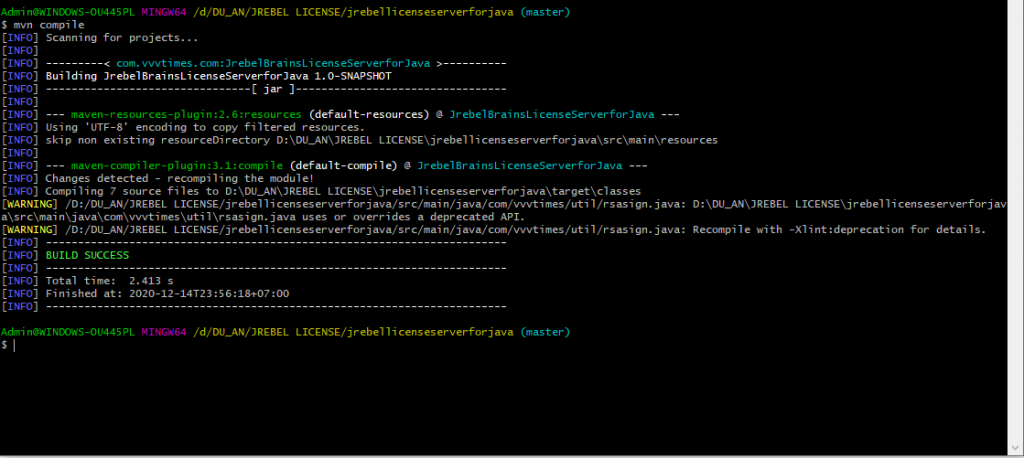

restrict which modules are under Rebel-Control.are set within ~/.jrebel/jrebel.properties ( see documentation) More Details User-specific Agent Properties test your change in the running application.build the corresponding M圜lass.class by your IDE (in Eclipse usually done automatically - output folder is bin/classes).change M圜lass.java if the module mymodule within your IDE.within the startup log you should see some JRebel Success messages.start the Tomcat with startup-jrebel.sh.copy mymodule.jar to your Tomcat-deployment.The rebel.xml will also be part of the module artifact mymodule.jar.
#JREBEL CRACKED INSTALL#
by adding jrebel-maven-plugin to mymodule/pom.xml: org.zeroturnaround jrebel-maven-plugin 1.1.5 generate-rebel-xml process-resources generate Īfterwards you have to run mvn clean install to generate the target/classes/rebel.xml. Xbootclasspath/p:/home/myuser/.jrebel/bootCache/rebelbootCache.jar

#JREBEL CRACKED SOFTWARE#
#JREBEL CRACKED UPDATE#
If you update your VCS-resources outside of your IDE (e. THEREFORE: I recommend to only include the Eclipse target build folder (bin/classes) into the back-references. JRebel does not compare the timestamps of "bin/classes/M圜lass.class" and "target/classes/M圜lass.class" to use the most recent one. bin/classes and target/classes) it uses the first found (usually the one in bin/classes/M圜lass.class). If you would have two back-referenced resource folders (e. It uses the FIRST back-referenced resource it finds. If there is a resource in the back-referenced folder then JRebel uses this one. With JRebel, changes to classes are always visible with the Reflection API." ( ) Recommendations

"JRebel versions each class individually, instead of an entire application or module at a time – and it does not use classloaders. When the application loads a resource via Classloader the JRebel Classloader is used to check whether the resource under IDE-control (Eclipse, maven) is newer than the one deployed in the applications artifact (jar, war). JRebel adapts the Classloading Mechanism of the running application. The needed rebel.xml within each artifact (jar, war, ear) can be written manually or you can use the maven-jrebel-plugin. Technical Insights IDE-Deployment-Integration the artifacts created by your IDE are integrated into the running deployment (inside or outside of your IDE): JRebel transforms your IDE into a deployment tool.
#JREBEL CRACKED CODE#
Deploying code changes (Java-Classes, JSF-Resources, Spring-Context-Changes.


 0 kommentar(er)
0 kommentar(er)
